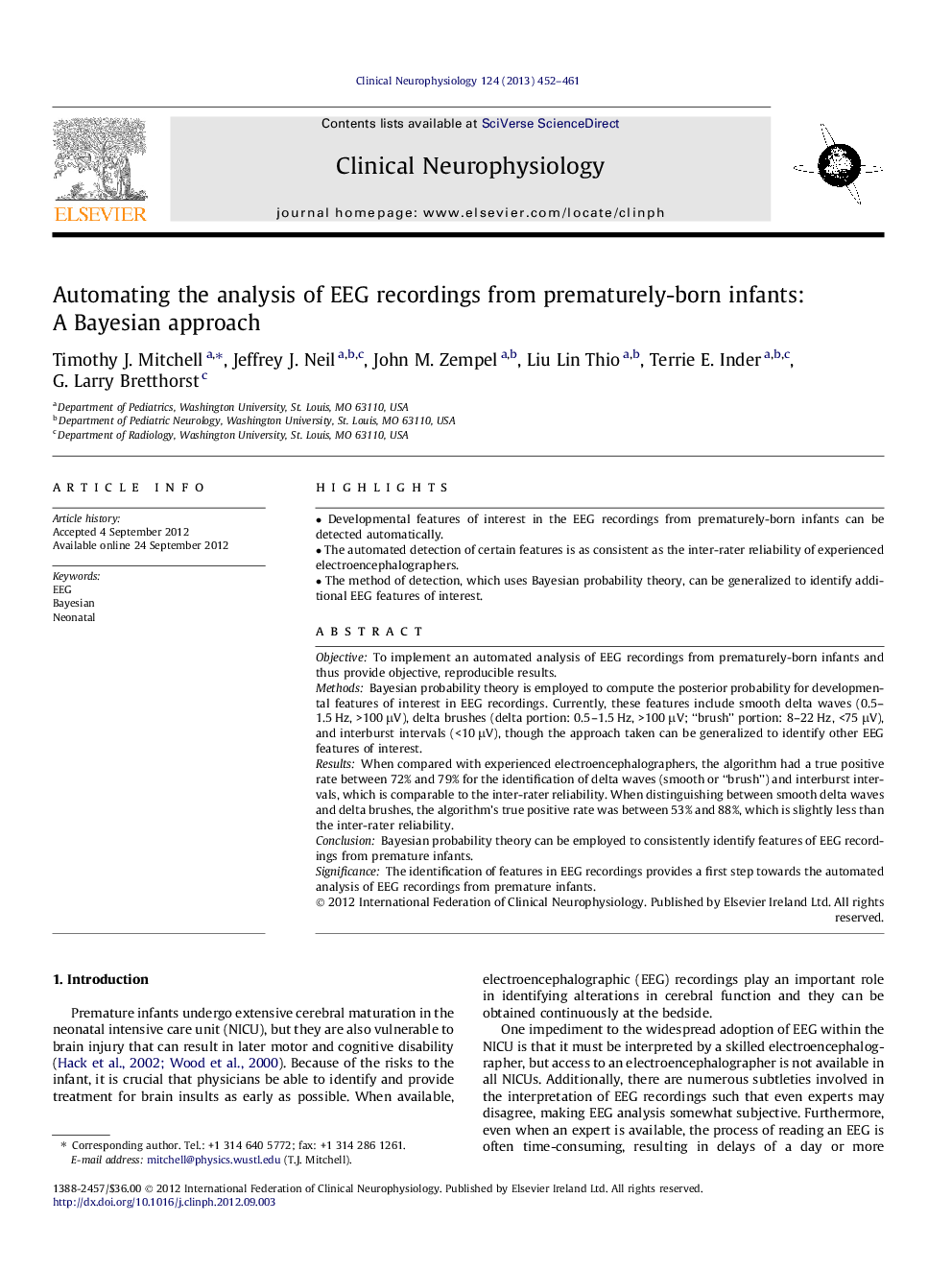| Article ID | Journal | Published Year | Pages | File Type |
|---|---|---|---|---|
| 3044356 | Clinical Neurophysiology | 2013 | 10 Pages |
ObjectiveTo implement an automated analysis of EEG recordings from prematurely-born infants and thus provide objective, reproducible results.MethodsBayesian probability theory is employed to compute the posterior probability for developmental features of interest in EEG recordings. Currently, these features include smooth delta waves (0.5–1.5 Hz, >100 μV), delta brushes (delta portion: 0.5–1.5 Hz, >100 μV; “brush” portion: 8–22 Hz, <75 μV), and interburst intervals (<10 μV), though the approach taken can be generalized to identify other EEG features of interest.ResultsWhen compared with experienced electroencephalographers, the algorithm had a true positive rate between 72% and 79% for the identification of delta waves (smooth or “brush”) and interburst intervals, which is comparable to the inter-rater reliability. When distinguishing between smooth delta waves and delta brushes, the algorithm’s true positive rate was between 53% and 88%, which is slightly less than the inter-rater reliability.ConclusionBayesian probability theory can be employed to consistently identify features of EEG recordings from premature infants.SignificanceThe identification of features in EEG recordings provides a first step towards the automated analysis of EEG recordings from premature infants.
► Developmental features of interest in the EEG recordings from prematurely-born infants can be detected automatically. ► The automated detection of certain features is as consistent as the inter-rater reliability of experienced electroencephalographers. ► The method of detection, which uses Bayesian probability theory, can be generalized to identify additional EEG features of interest.
